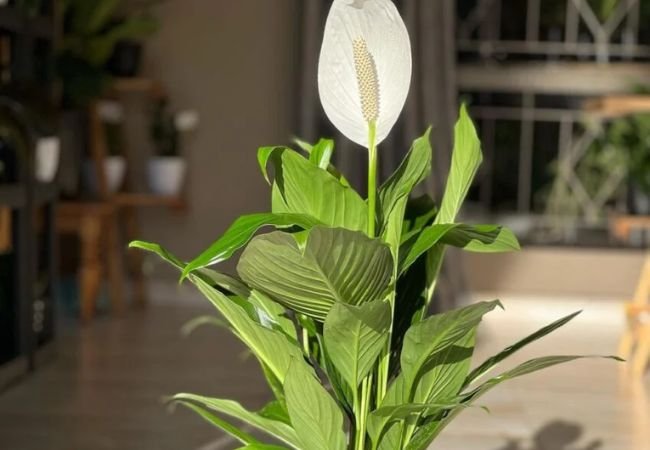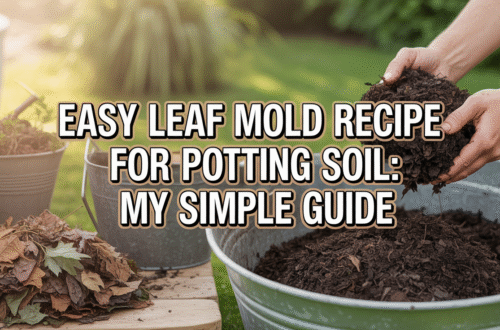Explore the differences between Aglaonema and Spathiphyllum—care tips, looks, and more. Ashley Scott, with 10 years of gardening know-how, helps you choose!
Hey there, plant enthusiasts! I’m Ashley Scott, and with 10 years of gardening experience under my belt, I’m excited to dive into a topic I get asked about all the time: Aglaonema vs. Spathiphyllum. If you’re trying to decide between these two popular houseplants for your home, you’re in the right place. Whether you’re a beginner or a seasoned plant parent, I’ll break it all down for you—differences, care tips, and how to pick the perfect one for your space. This article is packed with everything you need to know, so let’s get started!
Introduction: Why Compare Aglaonema and Spathiphyllum?
Aglaonema (aka Chinese Evergreen) and Spathiphyllum (aka Peace Lily) are two of the most loved houseplants out there. They’re beautiful, fairly easy to care for, and add a touch of green to any room. But when it comes to choosing between them, it can feel tricky. Do you want colorful leaves or elegant flowers? Low light or bright corners? I’ve grown both in my home, and I’m here to share what I’ve learned to help you decide. We’ll cover their differences, care needs, and more—so keep reading!
What is Aglaonema?

Aglaonema, or Chinese Evergreen, is a tropical plant from Asia and New Guinea. I adore this plant because of its stunning leaves—they come in all sorts of colors like green, silver, pink, and even red! There are tons of varieties, so you can find one that matches your vibe.
What I love most about Aglaonema is how chill it is. It’s happy in low to medium light, which makes it perfect for spots like my shady office nook. It’s also pretty forgiving if I forget to water it for a few days. If you’re new to plants or have a busy schedule, this one’s a great pick.
What is Spathiphyllum?

Spathiphyllum, or Peace Lily, hails from the tropical Americas and Southeast Asia. This plant is a stunner with its glossy green leaves and white “flowers” (they’re actually special leaves called spathes). I’ve got one in my living room, and every time it blooms, it feels like a little gift.
Peace Lilies are also famous for cleaning the air—something I noticed when I added one to my bedroom. It’s a bit pickier than Aglaonema, though, so it needs the right light and water to stay happy. But trust me, it’s worth it!
Key Differences Between Aglaonema and Spathiphyllum
So, what’s the big deal between these two? Let’s break it down:
- Appearance: Aglaonema wins for leaf variety—think bold patterns and colors. Spathiphyllum shines with its white spathes and simple, dark green leaves.
- Light Needs: Aglaonema is cool with low light, while Spathiphyllum likes medium to bright indirect light. I’ve moved my Peace Lily around a few times to find the perfect spot!
- Watering: Both like moist soil, but Spathiphyllum droops dramatically if it’s too dry (it’s like a little drama queen). Aglaonema is more laid-back about it.
- Toxicity: Heads up—both are toxic to pets. My cat learned that the hard way, so I keep them up high now.
- Air Cleaning: Spathiphyllum is the champ here. Studies, like the NASA Clean Air Study, show it removes stuff like benzene from the air. Aglaonema helps too, but it’s not as famous for it.
Here’s a quick comparison table:
| Feature | Aglaonema | Spathiphyllum |
|---|---|---|
| Look | Colorful, patterned leaves | White spathes, green leaves |
| Light | Low to medium | Medium to bright indirect |
| Water | Moist, forgiving | Moist, sensitive |
| Pet Safety | Toxic | Toxic |
| Air Purification | Good | Excellent |
Care Tips for Aglaonema and Spathiphyllum
Now, let’s talk aglaonema vs spathiphyllum care. Both are pretty easy, but they’ve got their quirks. Here’s what I’ve figured out over the years:
Aglaonema Care
- Light: Low to medium indirect light. Direct sun burns the leaves—learned that the hard way!
- Water: Water when the top inch of soil feels dry. I stick my finger in to check.
- Soil: A well-draining mix works best—think potting soil with some perlite.
- Fertilizer: Feed it every 4-6 weeks in spring and summer with a liquid plant food.
Once, I forgot about my Aglaonema for a week, and it still looked fine. It’s tough like that!
Spathiphyllum Care
- Light: Medium to bright indirect light. It’ll survive low light but won’t bloom much.
- Water: Keep the soil moist but not soggy. If it droops, it’s begging for a drink!
- Soil: Rich, well-draining soil—I mix in some compost for mine.
- Fertilizer: Every 6-8 weeks in the growing season with a balanced fertilizer.
My Peace Lily once drooped so bad I thought it was a goner, but a good watering perked it right up. They’re dramatic but resilient!
Check out more tips on my site: How to Care for Aglaonema and Spathiphyllum: The Ultimate Guide.
Which One Should You Choose?
Choosing between Aglaonema vs. Spathiphyllum depends on you and your home. Here’s how I’d decide:
- Light: Got a dim room? Go Aglaonema. Brighter space? Spathiphyllum’s your buddy.
- Style: Love colorful leaves? Aglaonema’s got you. Want flowers? Pick Spathiphyllum.
- Skill Level: Both are beginner-friendly, but Aglaonema’s a tad easier if you’re forgetful.
- Air Quality: If you want cleaner air, Spathiphyllum’s the star.
I’ve got an Aglaonema in my low-light hallway and a Peace Lily near a window—they both thrive where they’re happiest!
Common Questions About Aglaonema vs. Spathiphyllum
Let’s tackle some questions I’ve seen pop up—like on Reddit or from friends:
What’s the Difference in Care?
Aglaonema vs. Spathiphyllum care comes down to light and water. Aglaonema is fine with less light and doesn’t mind if you miss a watering. Spathiphyllum needs more light and regular drinks to avoid a droopy tantrum.
Which is Better Indoors?
For aglaonema vs spathiphyllum indoors, it’s about your space. Aglaonema rocks in low-light spots, while Spathiphyllum loves a bright corner. Both are awesome indoors—just match them to your home!
What Do Reddit Users Say?
On Reddit, folks rave about Aglaonema’s easy vibe and Spathiphyllum’s air-cleaning powers. One user said their Peace Lily “blooms like crazy” near a window, while another called Aglaonema “the ultimate low-light champ.” I agree with both!
Conclusion: My Take on Aglaonema vs. Spathiphyllum
So, Aglaonema vs. Spathiphyllum—which one’s for you? Honestly, they’re both winners in my book. Aglaonema’s colorful leaves and chill attitude make it a go-to for any spot. Spathiphyllum’s elegant blooms and air-purifying skills steal the show in brighter rooms. Think about your light, your style, and how much TLC you can give, and you’ll know which one to grab.
Got a favorite? Drop a comment below—I’d love to hear your stories! And if you want more plant tips, swing by Best Houseplants for Low Light on my site.
Happy planting!







One comment on “Aglaonema vs. Spathiphyllum: Which Houseplant is Right for You?”